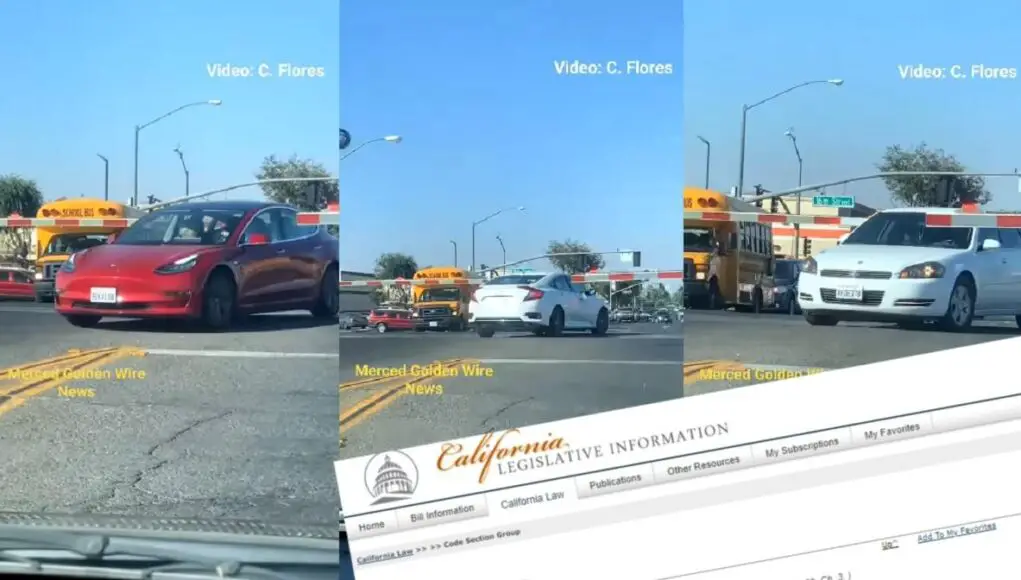It sounds logical to drive around lowered railroad crossing arms when your senses say it’s safe, but the law says otherwise.
Imagine this scenario. Rushing to work after lunch, you’re stopped at a railroad crossing in the middle of the day. After what seems like an eternity, you don’t see or hear a train coming.
The cars lined up behind you can sense the same and just their presence pressures you to think about driving across those lowered crossing arms. There’s a gap large enough for a car to slip through anyway.
This same scenario played out last week in Merced, California and witness video caught several cars making a judgement call to drive around the lowered crossing arms after presumably waiting for too long.
Check out the video below.
First, a Tesla Model 3 drives around. Then, four other cars from both sides, emboldened by the Tesla driver, follow suit in quick succession.
Other drivers, fed up with waiting but smart enough to not cross, flip a U-turn and re-route.
You hear the video recorder say, “Don’t ever do that.”
So, who’s right?
What does the law say?
According to CVC 22451(b,)
“No driver or pedestrian shall proceed through, around, or under any railroad or rail transit crossing gate while the gate is closed.”
Note, the Vehicle Code does not give provision for the possibility of malfunctioning crossing arms. It’s the law, working crossing arms or not.
“The fine for failing to stop at a railroad under CVC § 22452 is $490 and one point against your license.“
If police catch cars crossing around lowered crossing arms, because they’ll stick out like sore thumbs, the “I’ve been waiting for a long time and didn’t see any trains coming” will not be a valid excuse.
Why can’t we use our God given senses and be logical about it?
Before researching the answer, I was on the side of many commenters in my hometown who laugh reacted and threw in their .02 about the absurdity of it.
Adam, a Merced County resident commented,
“Well, if you’re sitting there for a while and no train comes…. the arms are obviously malfunctioning… it’s ok to use your God given senses to do things such as look and listen to determine whether or not it is safe to cross.
PRO TIP: If there is a train visible, don’t cross. If there is no train in sight, it’s probably safe.“
It’s a logical answer coming from one smart dude (I happen to know the guy.)
As Rail Safety Education points out, it’s not a one-size fits all scenario.
Unfortunately, not a lot of rail crossings are as barricaded as this Merced one.
Most crossings have warning signals but no crossing arms.
If you think a train is far away and it’s safe to cross, “The train you see is closer and faster-moving than you think.”
Furthermore, as the video above shows, while one car might’ve safely crossed, this does not guarantee the other emboldened drivers have enough time given a different scenario.
And even if you don’t see a train, there’s always the possibility of getting stuck crossing. Youtube is filled with semi-truck drivers taking a chance and getting their loads high-centered halfway across.
Conclusion
Yes, it’s illegal per the California Vehicle Code to cross any lowered crossing arms at a railroad crossing, malfunctioning or not. Getting caught is punishable by a $490 fine and one point on your record.



